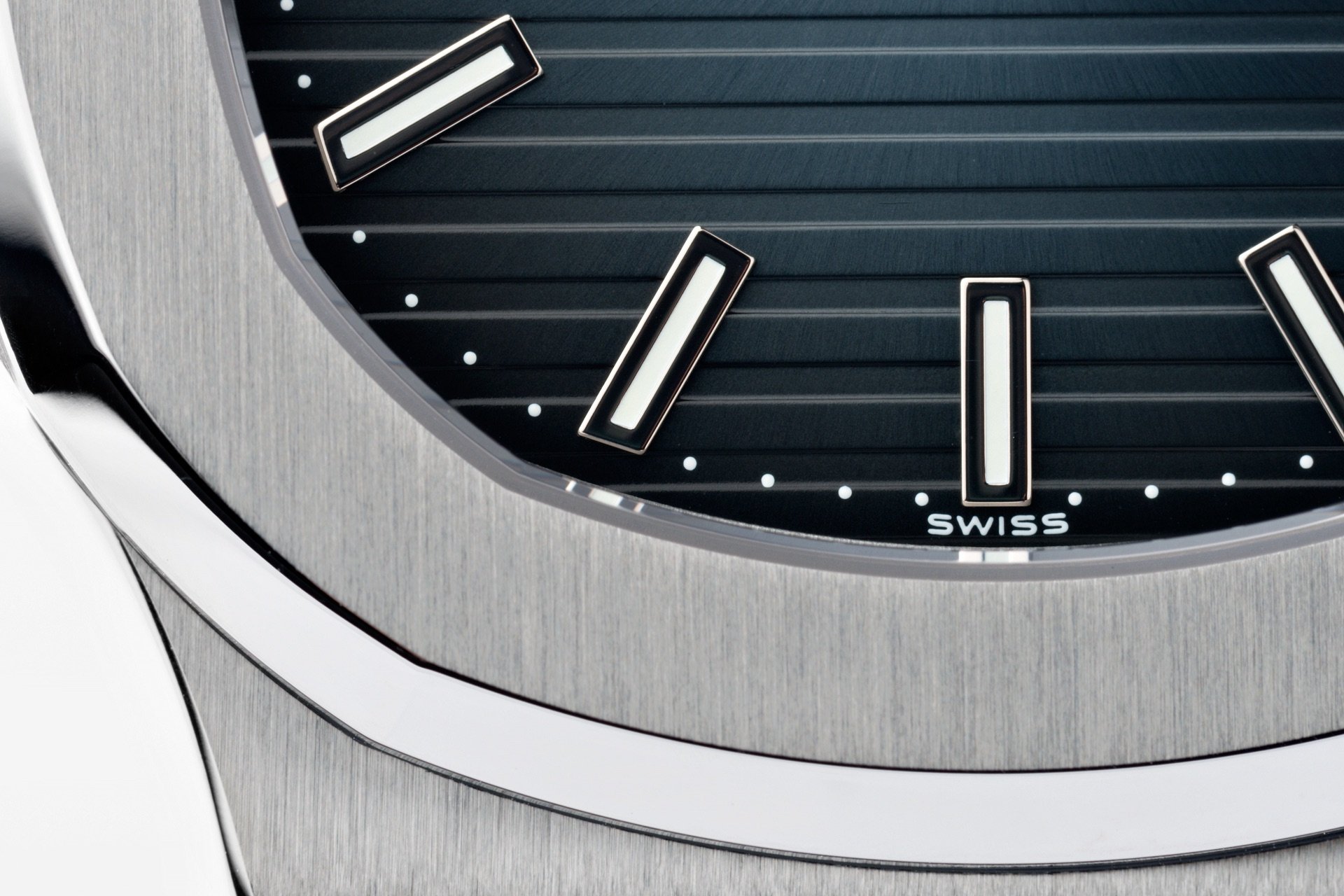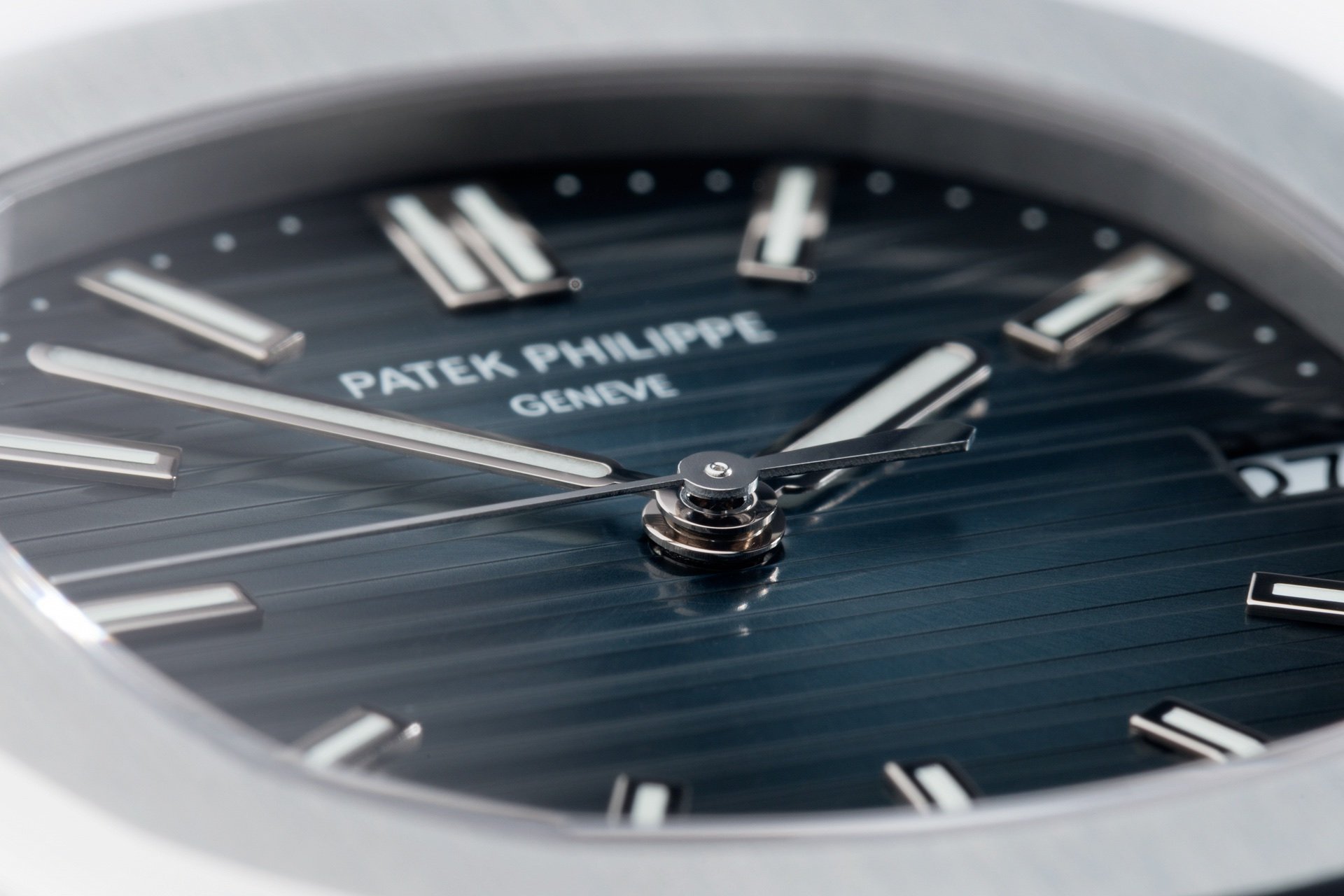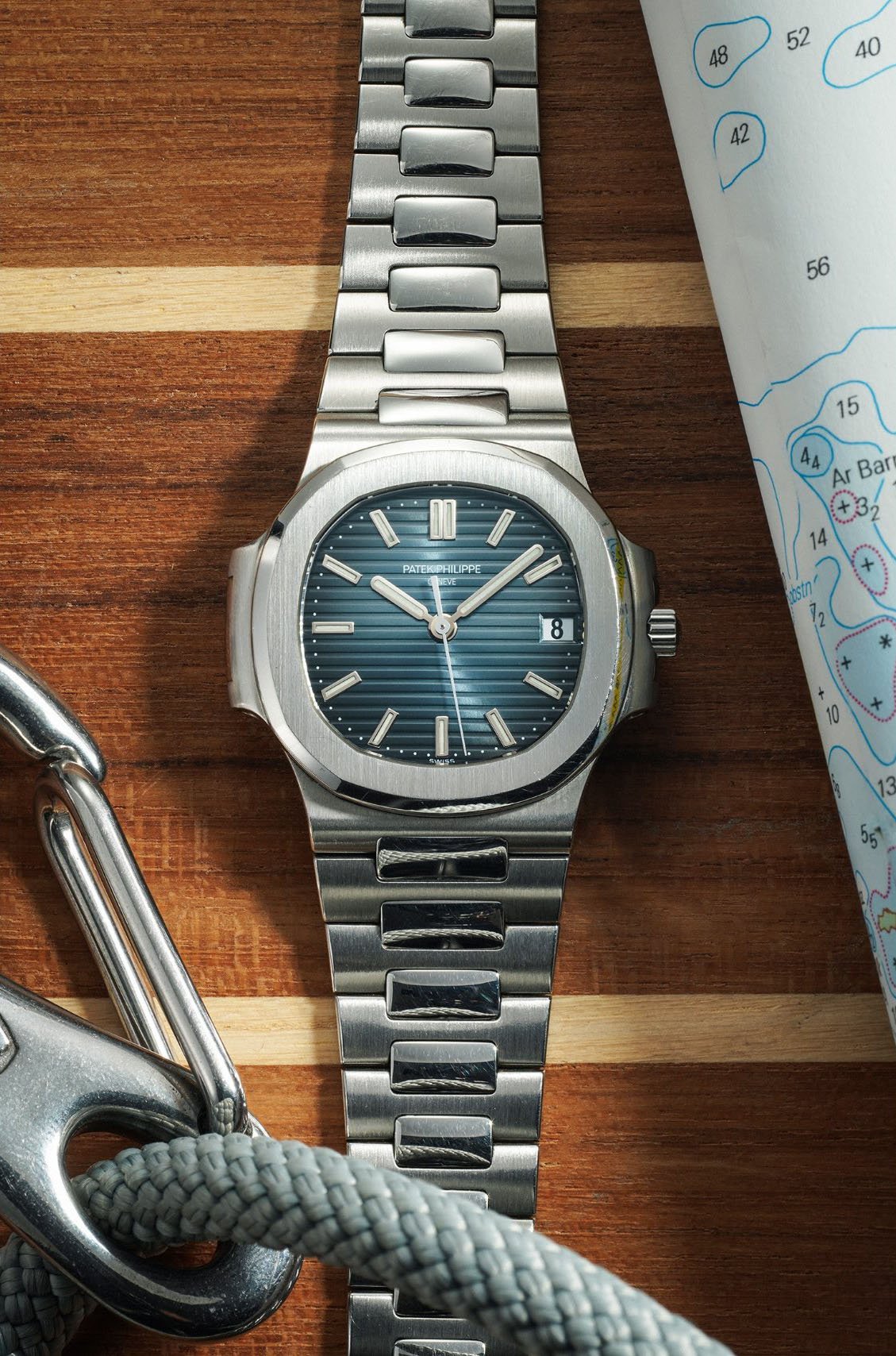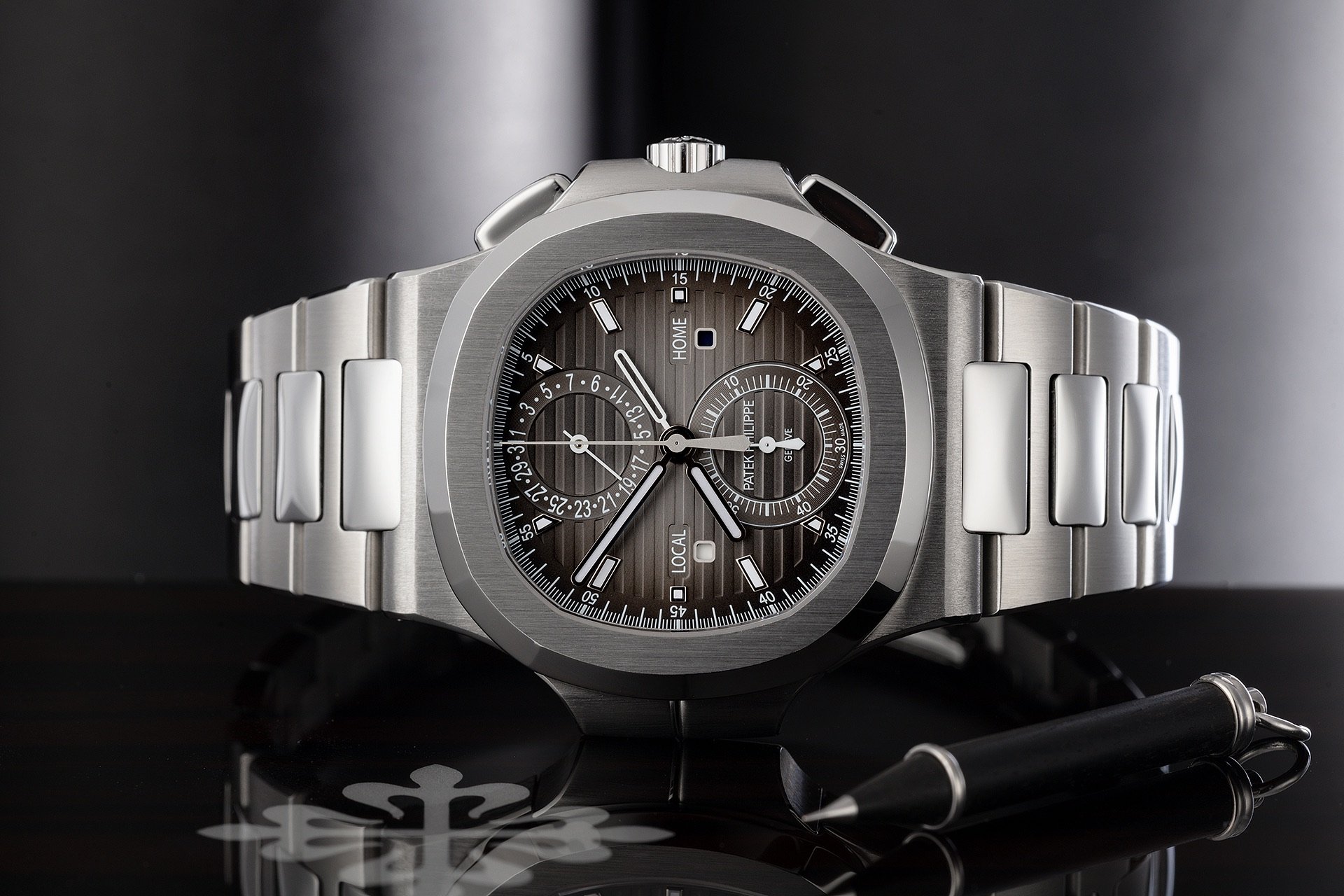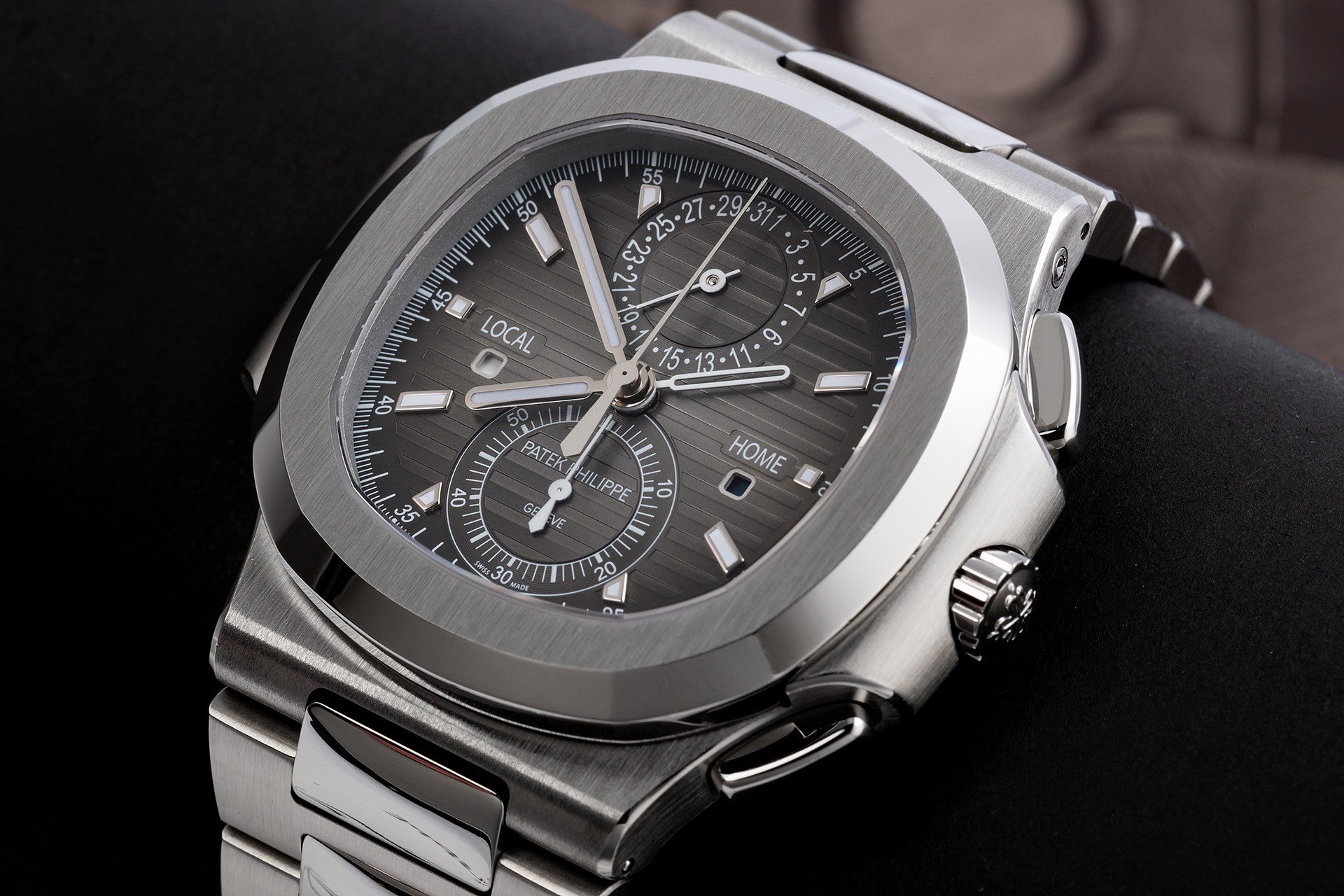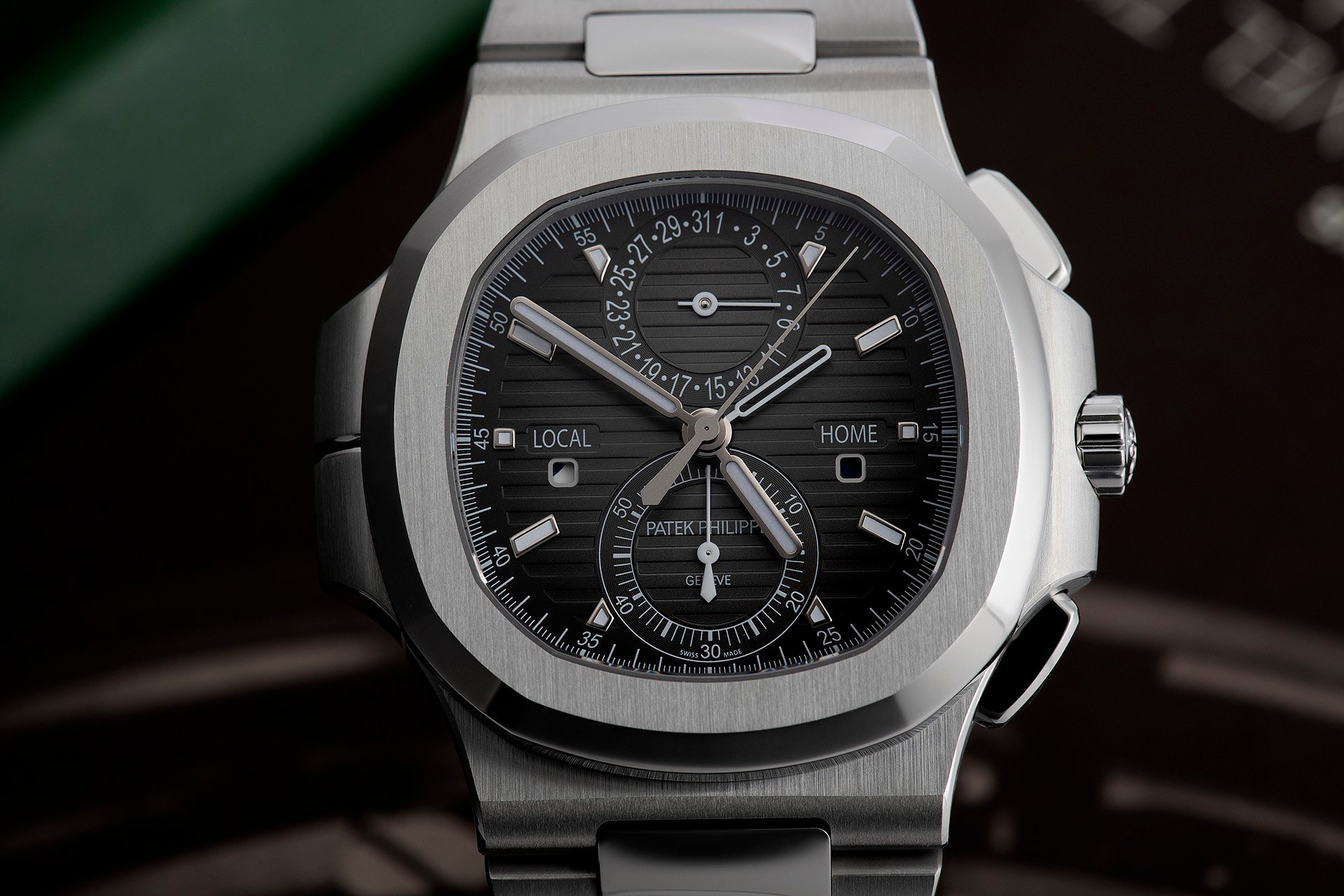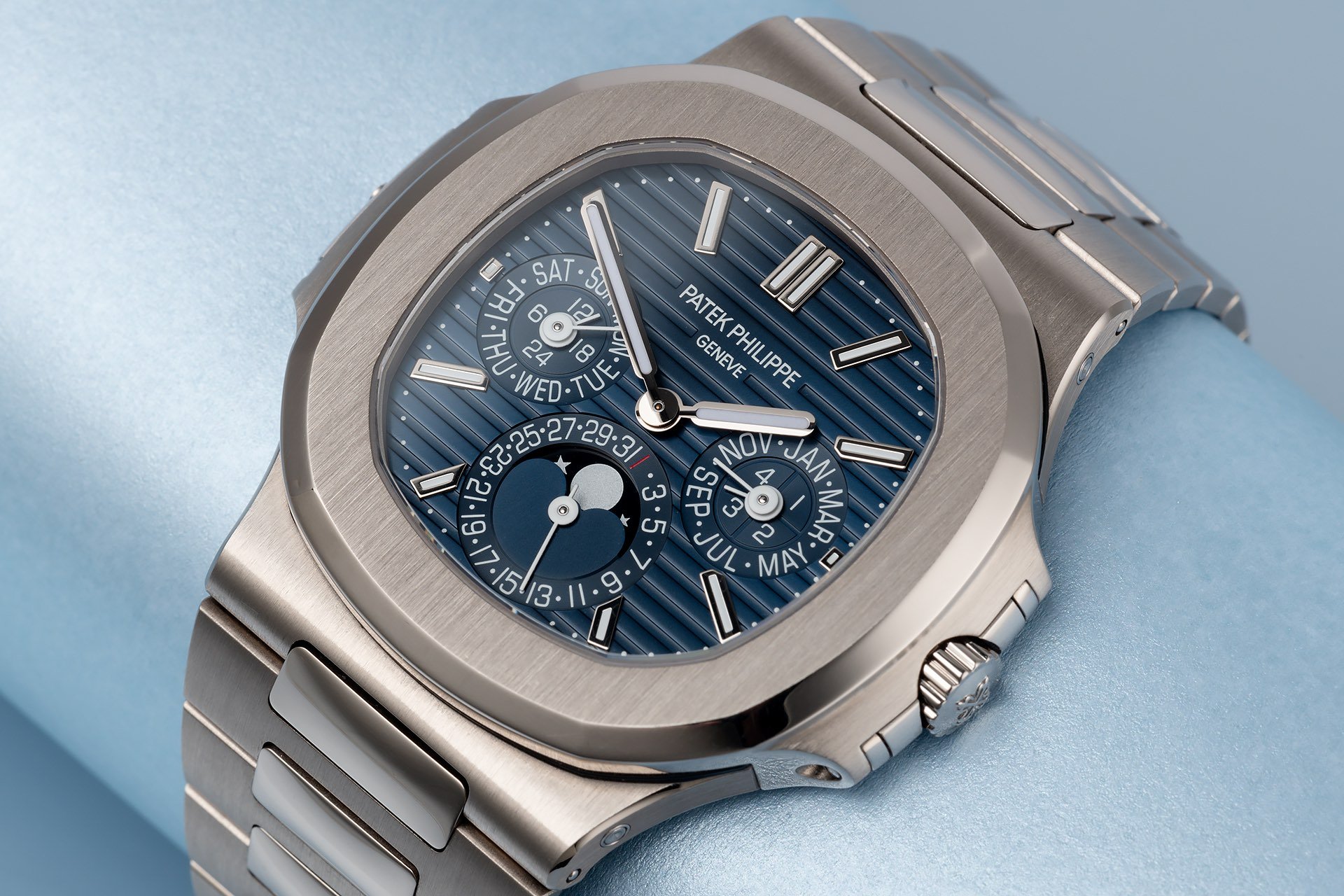Fratello’s Top 5 Patek Philippe Nautilus References
Another Friday, another list! This week, we’ll take a look at the famous Patek Philippe Nautilus. It’s a great reminder of what makes Gérald Genta’s creation stand out. The watch was first introduced in 1976 and has become one of the industry’s leading silhouettes over time. But we all know that the brand discontinued the stainless steel “Jumbo,” much to fans’ discontent. In light of the recent news about the Patek Philippe Cubitus, it only seemed logical to dedicate an article to the Nautilus and remind ourselves why it is such a great series. We picked our five favorite references, and while some are no-brainers, others might surprise you. Let’s find out more!
Before we jump into our list of favorite Nautilus references, it’s good to explain that the Nautilus collection has never been an extensive series with “zillions” of references. It makes a list like this a lot easier to create than some others, of course. However, it must be said that the current Nautilus collection consists of 28 references, 18 of which are ladies’ models. This seems like quite a significant number, but it has a nuance. Specifically, 16 of the 18 women’s models are variations of the ref. 7110. So that automatically narrows it down quite a bit. But with only six gentlemen’s models over nine unique references, the collection is rather limited. It’s quite an interesting observation. But we’re not here to look at just the current collection, so let’s take a look at our five favorite Nautilus references ever created.
Patek Philippe Nautilus “Jumbo” ref. 3700
Let’s kick things off with the original Nautilus ref. 3700/1A that came out in 1976. This reference stayed in production until 1990. However, it wasn’t until 2004 that we saw the classic Nautilus “Jumbo” return to the scene with the introduction of the ref. 3711. The first Nautilus introduced the characteristic 40mm case with its rounded, seemingly square bezel. Look again, though, and you will see that the bezel is octagonal. But in his exploration of rudimentary shapes, it is fair to say that Genta played with a circle for the Ingenieur, a square for the Nautilus, and an octagon for the Royal Oak that started it all.
Accompanying the original Nautilus is the story of Genta drawing the design on a napkin during the Basel watch fair while seated close to a table of Patek Philippe executives. It’s a fun story that, if true, would make it a great accomplishment. According to the story, Genta got the idea for the design from the hermetically sealed portholes on large ocean liners that would cross the Atlantic. This inspired a design that still looks as fresh today as it did almost five decades ago.
A brilliant two-piece case design
The case featured a two-part construction to avoid the risk of water intrusion and had a 120m depth rating. Its construction consisted of a part that formed the middle and back of the case and another for the bezel with its characteristic protrusions, also known as “ears.” Four lateral screws in these ears held the two parts together, and a bezel gasket sat between the two pieces. The construction reminds me of the actual side hinges used for portholes. The technological development of this construction took Patek Philippe two years and is a great reminder of the brilliance of not just the design’s aesthetic but also the technicality of it. The ears have an actual function that was pivotal in developing that first-generation Nautilus.
Inside the case, Patek used the ultra-thin caliber 28-255C based on the Jaeger-LeCoultre 920. It’s the same ébauche that Audemars Piguet used to create its famous caliber 2121 for the Royal Oak. Patek Philippe needed an ultra-thin movement because a slim profile was an elemental part of Genta’s design vision. The result was a watch that was an impressive 7.5mm thin with an elegant profile. Because the back of the case was not a separate piece, the watchmakers equipped the movement with a split stem so it could be removed and installed easily through the dial side. The automatic caliber featured a date window at 3 o’clock and offered 40 hours of power reserve.
A watch that oozes craftsmanship
Within the case was a dark blue dial featuring a hand-embossed ribbed pattern and a handset consisting of only an hour and a minute hand. Patek Philippe created different versions of the dial over time. The earliest version featured a painted baton minute track. However, later dials featured a minute track with dots and “σ SWISS σ” below 6 o’clock. The dial’s horizontal stripes contrast with the vertical brushing of the bezel, creating a nice visual dynamic for the wearer.
Another pivotal part of the success is the bracelet. The H-link design with the rounded rectangular center links might not be as outspoken as the bracelet of the Royal Oak, but it is certainly one of the industry’s best and most celebrated. It comprises 159 hand-finished parts. Once assembled, the bracelet was finished again to ensure the elements match perfectly. The brand used two different versions of the bracelet during the production run of the ref. 3700. The first was for the ref. 3700/1A, which featured a wider 16mm bracelet and was in production from 1976 until 1982. The later ref. 3700/11A was produced from 1982 until the reference’s discontinuation in 1990 and featured a 14mm bracelet with an elegant taper.
Only 3,300 pieces produced
Another remarkable detail about the Nautilus 3700 was that Patek Philippe presented it in a cork box. It is the finishing touch to a remarkable watch that saw a 14-year production run. Patek Philippe supposedly produced 3,300 pieces of the stainless steel ref. 3700/1A during that time. While seemingly not a shockingly low number, it averages a total of 235 pieces per year. That creates a pretty good perspective of the low annual production.
Its popularity and relative scarcity ensured that prices have gone up over time. Expect to see asking prices starting at just under €100K and moving up to double that for pieces in good condition. In return, you will get a defining piece of horological history that hasn’t lost any of its relevance. Just looking at the pictures made me fall in love with the original Nautilus all over again.
Patek Philippe Nautilus “Jumbo” ref. 5711
After the discontinuation of the famous Nautilus “Jumbo” ref. 3700, another Jumbo version of the watch was not part of the collection for fourteen years. In 2004, the watch returned in white gold with a black dial as ref. 3711/1G. But not just the material and the dial color changed.
The case was the same size (40mm in diameter and 42mm from ear to ear), but it lost its two-piece design in favor of a three-part construction. Additionally, the case back featured a sapphire display to showcase the in-house caliber 315 SC. That specific reference was only in production from 2004 until 2006.
Then, the new stainless steel ref. 5711/1A succeeded it, commemorating the 30th anniversary of the Nautilus. The new stainless steel model was a little larger at 43mm from ear to ear, but the 40mm diameter remained. The ears or hinges also received an updated design. Whereas the ref. 3700 had straight hinges, the new ref. 5711 featured rounded hinges to match the curvature of the bezel and protect the larger crown on the right side of the case. The case, at 8.3mm from top to bottom, was just slightly thicker than the 7.6mm measurement of the original watch, but it retained the 120m water resistance rating.
Many small but relevant updates
Additionally, the dial was updated with a more lively shade of blue and a new logo. Patek Philippe also updated the handset with an additional centrally mounted seconds hand. The updates continued with the bracelet. The designers made the central links flat, whereas the original center links of the ref. 3700’s bracelets were rounded. This update helped give the watch a significantly more modern feel. On top of that, Patek Philippe updated the clasp from a double-folding blade to a triple-folding clasp with the flip-lock that was also part of the first reference.
As mentioned, in the gold ref. 3711/1G, the movement was updated from the JLC-based 28-255C to the in-house caliber 315 SC. Patek also used this movement when production of the Nautilus 5711 started. However, the brand quickly changed to the caliber 324 SC. This automatic caliber comprised 213 parts, operated at 28,800vph, and offered 45 hours of power reserve. Patek updated the movement in 2009, going from a Geneva Seal to the Patek Philippe Seal. Then, in 2019, the brand introduced the 26-330 SC, an evolution from the caliber 324 SC. It powered the last generation of the Nautilus 5711 until its discontinuation.
The different variations of the ref. 5711
As most of you will know, Patek Philippe did not just produce a stainless steel 5711 with a blue dial. There were also versions with white, green, and Tiffany dials. The brand also created a rose gold edition with a brown fumé dial and versions in yellow gold and white gold with leather straps. From 2006 until its discontinuation in 2021, the Nautilus ref. 5711 became a grail for many watch fans, and prices skyrocketed a few years back.
Currently, the asking prices for the different executions vary quite a bit. Expect to see the standard blue-dial version in steel (5711/01-010) start at roughly €85K and easily move up to €200K. The green-dial version (5711/01-014), which was produced for one year only, starts at roughly €200K and moves up to €500K. A full-rose-gold version (5711/1R-001) is more affordable, starting at €140K and moving up to €350K. Overall, the prices are astronomically high, giving you an idea of the popularity of the modern-day Nautilus. But knowing that you buy the original ref. 3700 at the same price as the modern version is remarkable. I know which one I would choose.
Patek Philippe Nautilus “Mid-Size” ref. 5800
Our next pick is not one of the obvious options. The mid-size version of the Nautilus debuted in 1981 with the ref. 3800. This smaller version featured a 37.5mm case that had the same design traits as the ref. 3700. The smallest case held the in-house caliber 335 SC with a centrally mounted seconds hand. In 1992, that caliber made way for the 330-134 SC, which would go on to evolve. The movement also established the architecture of the calibers 324 and 26-330 SC that powered the Jumbo models. Because of this, the mid-size ref. 3800 is a pivotal reference in the Nautilus’ history.
But instead of picking the original mid-size Nautilus ref. 3800, we chose its successor. The Nautilus ref. 5800 came out in 2006 and combined the updated modern looks of the Nautilus with the classic two-part case construction, including an integrated sapphire display window. It makes this reference a brilliant combination of the original concept and the updated aesthetic. The case size increased slightly to 38.5mm in diameter, making it very relevant to people who love the Nautilus but want a slightly smaller version than the Jumbo. Furthermore, this watch’s diameter also makes it look slightly less compressed than the ref. 3800, which is why we prefer it in terms of looks.
Only a short production run from 2006 to 2009
Inside the case, which is also water resistant up to 120 meters, Patek Philippe used the caliber 330 SC I just talked about. Thanks to the sapphire display window, you can see the movement in action and the gold rotor, which proudly has the Geneva Seal engraved. Because the watch-buying public started gravitating towards bigger watches, Patek discontinued the mid-size Nautilus in 2009 after only a few years of production.
This made the ref. 5800 an overlooked reference in the following years. But that time is long gone. Nowadays, the asking prices for the watch are on the same level as those of its bigger brothers. So expect them to start at roughly €80K and increase to €140K. While this hardly makes the 5800 a “budget Nautilus,” it is still a perfect option for people looking for a smaller version of the classic icon.
Patek Philippe Nautilus Travel Time Chronograph ref. 5990
Our fourth pick is the first complicated Nautilus model on this list. One of the things we quickly agreed on when picking the watch for this list is that the complicated models are not the best of the Nautilus line. While the time-and-date models’ dials feel perfectly balanced, unfortunately, the dials with added registers often feel crowded. If you look closely, you will often see that the sub-dials often take up much space on the dials. Having said that, we’ll gladly make exceptions for the last two entries on this list.
The first is the Nautilus Travel Time Chronograph ref. 5990 that came out in 2014. The watch was a follow-up to the Nautilus Chronograph ref. 5980, which debuted in 2006 as the brand’s first-ever automatic chronograph. The ref. 5990 built on that watch by combining the chronograph with a dual-time function.
Not only did the brand add a complication, but that also made the designers reconsider the dial and case design of the watch. First, the pushers on the ref. 5980 sat very far away from the crown. It’s still a weird design solution if you ask me. But for the Travel Time Chronograph ref. 5990, the designers moved them closer to the crown. The reason the chronograph pushers had to move was also due to the addition of an inset date-correcting pusher at 1 o’clock and the time-zone-correcting pushers at 9 o’clock.
The dial design works thanks to some clever choices
Next to the 40.5mm case design, getting the right balance on the dial was the next challenge. If you are familiar with the previous ref. 5980, you know that Patek created multiple dial designs for its flyback chronograph. The versions where the chronograph sub-dial is a mixture of bright colors are not the brand’s best, and it makes the lower half of the dial fairly loud. For the ref. 5990 to work, the brand took inspiration from the open sub-dial design of the stainless steel white-dial version, the two-tone version, and the rose gold version of the Nautilus 5980.
First, the designers added a date sub-dial at 12 o’clock instead of having a date aperture at 3 o’clock. After that, the chronograph register was simplified to 6 o’clock by removing the hours. The travel-time complication was also nicely integrated, with the solid hands indicating the local time and the skeletonized hand displaying the home time. The two cleverly designed pushers on the left side of the case allow you to adjust the local time forward or backward in one-hour increments. Finally, the day/night apertures are integrated underneath the local and home time inscriptions at 3 and 9 o’clock. The result is a dial that feels surprisingly balanced. Part of that is due to the symmetrical layout that results from the open and tone-on-tone sub-dials.
The brilliant in-house CH 28-520 C FUS movement
Powering this Nautilus Travel Time Chronograph ref. 5990 is the in-house caliber CH 28-520 C FUS. The movement is only 6.95mm thick, ensuring that the case is relatively svelte (12.53mm thick) for such a complicated watch. The beautifully finished movement is visible thanks to the sapphire crystal in case back. Patek Philippe has created three versions of the Nautilus ref. 5990.
The first is the discontinued stainless steel version with a black gradient dial we picked for this list (5990/1A-001), which is offered roughly between €95K and €185K. The second is still in production, and it’s another steel version but with a blue dial (5990/1A-011). Despite its roughly €71K retail price, this model sells for roughly between €130K and €165K on the secondary market. Finally, there’s the currently in-production rose gold version with a darker blue dial (5990/1R-001). This will cost around €125K at retail or €215K–300K secondhand. The frankly insane prices aside, these watches prove it is possible to integrate sub-dials properly on the dial of a Nautilus to make the complicated models work.
Patek Philippe Nautilus Perpetual Calendar ref. 5740
The last watch we picked for this list is the Nautilus Perpetual Calendar ref. 5740, which came out in 2018. The watch combines the legendary Nautilus with the brand’s celebrated perpetual calendar compilation. It is only available with a 40mm white gold case that is only 8.42mm thick. This is an impressive accomplishment considering the integration of a grand complication into the famous Nautilus design.
The sides of the case feature inset pushers to correct the different functions, and the brand’s thinnest perpetual calendar ensures that Genta’s original design aesthetic is maintained perfectly.
The movement that makes this possible is the brand’s ultra-thin caliber 240. This automatic movement comprises 275 parts, including a gold micro-rotor featuring the Geneva cross. The caliber operates at 21,600vph and offers 48 hours of power reserve. Three sub-dials at 3, 6, and 9 o’clock brilliantly integrate the different functions.
The first indicates the month and also has an integrated leap year indicator. The sub-dial at 6 o’clock displays the date and the moon phase. Lastly, the sub-dial at 9 o’clock features the day of the week and an integrated 24-hour indicator. Overall, the dial design is a great example of balance and symmetry. This ref. 5740 shows that it is possible to create a beautiful Nautilus by integrating a grand complication. It does not have to impact the slim profile or the balance of the dial.
While this watch goes for about €160K at retail, if you want to get your hands on one, expect to see asking prices between €195K and €300K. Considering that this is a white gold watch with a grand complication, it is relatively “affordable” compared to the stainless steel Jumbo models.
Final thoughts on the best Patek Philippe Nautilus references
There you have it — the top five Patek Philippe Nautilus references according to us. Seeing these watches reminded me of the brilliance of the original concept. But it was also a sobering reminder of the high prices that these watches go for. A remarkable conclusion is that the original ref. 3700 is one of the more affordable Nautilus models out there. While “affordable” is not an appropriate word for any Nautilus, that fact is rather striking. The 3700 also happens to be my favorite because nothing beats the original. But I want to turn the question over to you. What is your favorite Patek Philippe Nautilus? Let us know in the comments section, and we will see you next week for another list.











